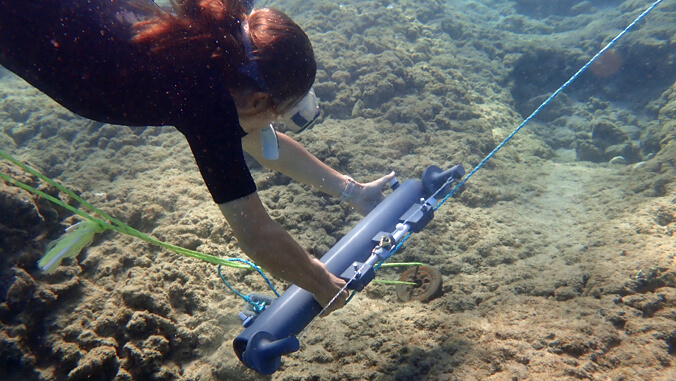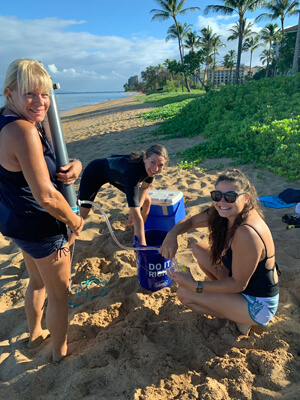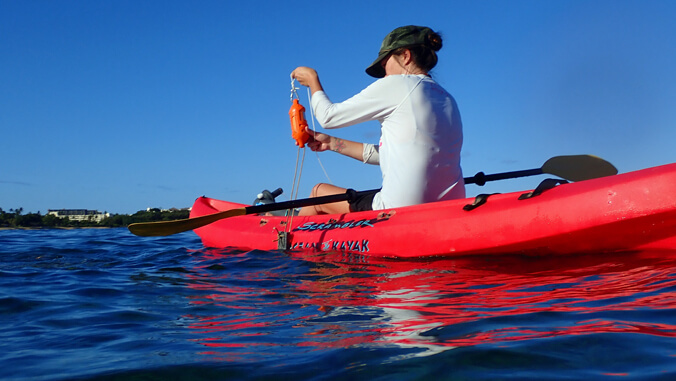
Establishing water quality targets for injected wastewater and submarine groundwater discharge at the Kahekili coral reef ecosystem in West Maui is the aim of a new research collaboration between the University of Hawaiʻi Maui College and Texas A&M University.
The project received $176,000 from the National Fish and Wildlife Foundation (NFWF) in September to collect and assess samples from a range of water quality conditions.

“Our water sampling effort began during the pandemic and, with support from the NFWF, will continue through the rebound of tourism,” said Principal Investigator Andrea Kealoha, who is director of the UH Maui College Water Quality Lab. “This will allow us to understand how nutrient concentrations and acidification changes under a range of population levels, and how the reef responds to these changes.”
According to the investigators, the degradation of the Kahekili coral reef is linked to nutrient pollution and coastal acidification caused by wastewater injection wells operated by the Lahaina Wastewater Reclamation Facility (LWRF). Discharge from natural groundwater and treated wastewater from the LWRF has been found within the coral reef. Excessive pollution in the form of nutrients from runoff and acidification reduces coral building and diversity and increases breakdown of coral.
In early 2020, the LWRF completed infrastructure upgrades aimed at improving nutrient removal from wastewater prior to injection. In March 2020, a visitor quarantine was instituted to manage the COVID-19 pandemic, resulting in dramatic declines in population levels and the amount of wastewater received, treated and injected. Nutrient concentrations of submarine groundwater discharge entering the reef also declined.
Using samples collected under a range of water quality conditions, changes in coral reef metabolism will be used as a measure of coral reef health to identify tipping points for the volume, nutrient concentrations and pH of injected wastewater and submarine groundwater discharge. Using best practices learned from the Kahekili study, a roadmap will be developed to establish water quality targets for Maui’s south shore affected by the Kīhei Wastewater Reclamation Facility.


